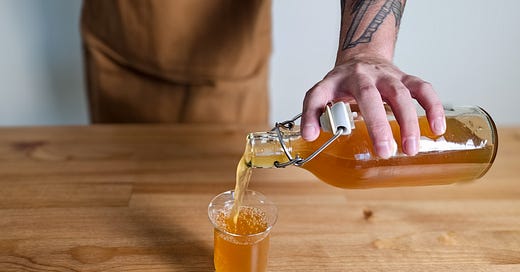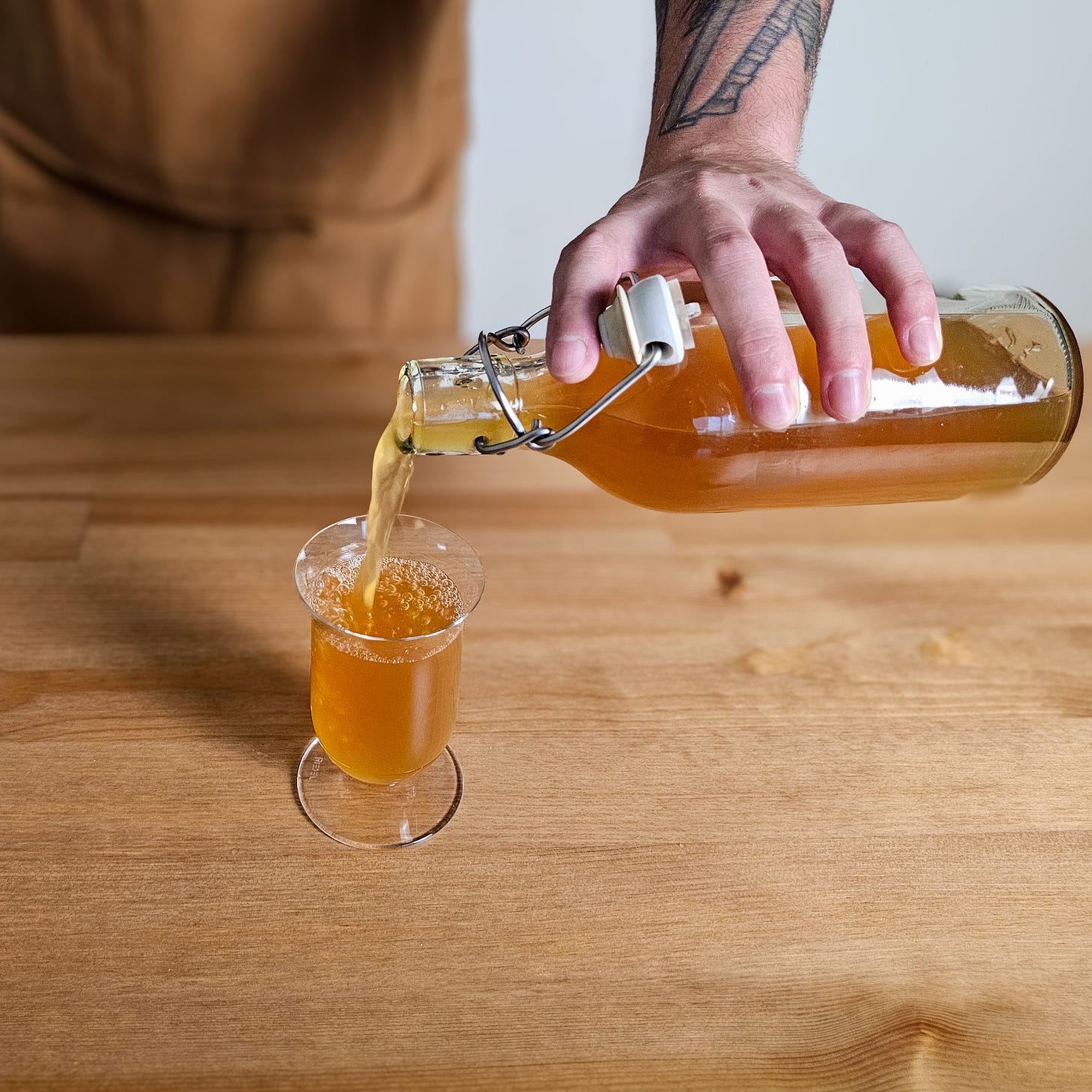Cereal Fermenter: Unlocking the Secrets of Grain Fermentation
The upcoming fermentation course explained
Fermentation is an age-old practice that has been shaping culinary traditions for centuries. From preserving food to enhancing flavor and nutrition, this transformative process has found its way into cultures around the world. The Cereal Fermenter course, developed by the Cosmos Society fermentation consultancy and online education platform, is designed to bring you the hidden gems of grain-based fermentation. Through this comprehensive and practical course, you will explore overlooked techniques and the science behind transforming humble grains into rich, flavorful ferments.
The course is led by Denis Pashkov, a fermentation revivalist with over a decade of experience in hospitality, particularly in leading some of the most prominent bars. His dedication to understanding taste and culinary processes took him into the kitchen for weeks and months at a time. This hands-on experience has given him a well-rounded perspective on both the bar and kitchen sides of fermentation. Over the years, Denis transitioned into education, sharing his knowledge and supporting fermentation communities worldwide. His approach is humble yet deeply knowledgeable, offering practical, hands-on learning that anyone — from professional chefs & bartenders to home enthusiasts — can benefit from.
Set to launch on January 8, 2025 Cereal Fermenter will provide a thorough grounding in grain-based fermentation, offering everything you need to master these techniques, whether you’re working in a high-end restaurant lab, a bar with limited preparation space, or your own home kitchen.
Course Structure and What You Will Learn
Cereal Fermenter is a structured, hands-on course where you will not only learn how to ferment grains but also understand the scientific principles behind each ferment. Denis Pashkov and Cosmos Society have designed each module to offer detailed insights into the reactions that occur during fermentation and how to control them. You’ll learn about temperature regulation, pH readings, and precise recipes, ensuring that your ferments are consistent and successful.
Here’s a breakdown of the course modules:
1. Introduction to Fermentation
You’ll start with the practical essentials of fermentation, gaining a clear understanding of how fermentation works on a biological level. You’ll learn how to identify the right fermentation method for different grains and how to apply these techniques in various settings—whether it’s a home kitchen, a bar, or a restaurant lab.
2. Types of Fermentation
This module covers the main types of fermentation used in cereal-based ferments—alcoholic, lactic acid, acetic acid, alkali, and mold-based fermentation. You’ll dive straight into how to apply these methods in real-world recipes, helping you recognize which type works best for specific grains and flavors.
3. Fermentation Conditions
Achieving consistent results in fermentation depends on careful control of environmental factors. In this module, you’ll learn how to monitor and regulate temperature, humidity, and pH to promote the growth of desired bacteria while inhibiting harmful ones. This will help you craft stable and repeatable ferments.
4. How to Tell Whether Your Ferment Has Gone Wrong
Understanding potential issues in fermentation is crucial. This module will teach you how to recognize signs of spoilage, contamination, or improper fermentation.
5. Koji Explained and Garum Template Recipe
Koji, the mold behind some of the world’s most umami-rich ferments, takes center stage here. You’ll explore how to break down starches and proteins into complex, savory flavors and how to create a lamb tongue garum with a savory-sweet twist on a classic recipe, like garum butter caramel. This module will give you the key to unlocking umami in your ferments.
6. Amazake
Amazake isn’t just a sweet element—it’s a powerful, natural sweetener that also enhances other flavors with a subtle hint of umami. In this module, you’ll learn how to prepare amazake and use it as a flavor enhancer in recipes like feijoa amazake espuma, showcasing its versatility in both sweet and savory applications.
7. Miso
This module dives into the process of making barley miso, a hearty and flavorful ferment rich in umami. You’ll learn how to use barley as a base for this traditional amino-paste by fermenting it with koji and salt, creating complex flavors through the breakdown of proteins and starches. We’ll explore how to manage long-term fermentation and how to incorporate barley miso into your everyday recipes, boosting flavors with its deep, fermented richness.
8. Mirin
This module explores the process of making traditional mirin, a sweet rice wine commonly used in Japanese cuisine. You’ll learn how to play with flavor profiles.
9. Sourdough Starter Explained
This module explains the biology of a sourdough starter, highlighting its culture of lactic acid bacteria (LAB) and wild yeast. You’ll understand how these microorganisms work together to create the flavors and textures that define sourdough-based recipes.
10. Sourdough Starter Recipe
Here, you’ll get a step-by-step guide to creating and maintaining a sourdough starter. You’ll learn how to nurture the culture, troubleshoot common issues, and prepare it for use in bread and other recipes.
11. Lactic Acid Fermentation + Kvass
This module focuses on creating lingonberry kvass through lactic acid fermentation. You’ll learn how to create the perfect environment for lactic acid bacteria to flourish, leading to a tangy, refreshing ferment. This technique can be applied to a range of grain-based beverages and ferments beyond kvass.
12. Fruit Kisiel
In this module, you’ll dive into the process of making traditional kisiel, a fermented oat porridge that has been cherished in Eastern Europe for centuries. This nutrient-rich, tangy porridge is made by fermenting oats in water, allowing lactic acid bacteria to develop and transform the mixture into a lightly sour, creamy consistency. Further, you will learn how to prepare fruit kisiel—a beverage sweetened and flavored with fruits, thickened by heating the fermented oat porridge.
13. Amazake Yogurt
In this module, you’ll combine two types of fermentation— mold fermentation (koji) and lactic acid fermentation — to create a plant-based yogurt alternative. We will subsequently apply both types of fermentation to produce a unique product.
14. Jiu Niang
This module focuses on making jiu niang, a traditional Chinese sweet rice ferment. You’ll learn how to use jiuqu (a fermentation starter) to create this mildly alcoholic and sweet fermented rice, ideal as a standalone dish or an ingredient in other recipes.
Throughout these modules, you’ll not only create ferments such as lamb tongue garum, garum butter caramel, lingonberry kvass, and chili & chocolate atole gelato, but also gain a deep understanding of the chemical processes that shape each ferment. Precision is key, and you’ll master techniques such as monitoring temperature, adjusting pH and Brix levels, and refining recipes to suit your needs.
Here you can find all the modules in one place.
Practical Learning and Community Support
This course is highly practical, offering step-by-step guides and real-world applications that you can immediately implement. Whether you're in a bar with limited space or a high-end restaurant, you’ll have everything you need to start experimenting with cereal fermentation. Recipes and detailed instructions will help you navigate each ferment with confidence.
In addition, all course participants will be part of a dedicated Telegram chat where you can exchange ideas, ask questions, and share your fermentation successes. The Cosmos Society team is open to collaborations and eager to feature the most unique creations from the community. This ongoing support makes the Cereal Fermenter course not just a learning experience, but a vibrant community of like-minded fermenters.
Certification and Subscription Options
To access the full course, you’ll need to subscribe. All paid subscribers will have full access to the course materials, including recipes, fermentation guides, and community support. For those looking to receive formal recognition, a Founding Member subscription offers certification upon successful completion of the course.
Certification is awarded based on the submission of a completed fermentation project. Students will be required to submit their final recipe along with detailed logs of the fermentation process, including key readings such as temperature, pH levels, and other relevant metrics. These submissions will be evaluated not only on the final product but also on the student’s ability to monitor and control the fermentation process consistently.
connect with us on Instagram:
Denis Pashkov
cosmos society





